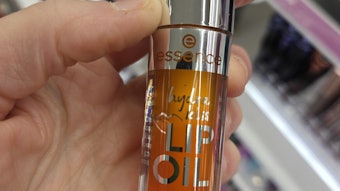
“If you have ever enjoyed the scent of a rose, you’ve experienced the aromatic qualities of essential oils," states doTERRA, on its website, defining essential oils. "These naturally occurring, volatile aromatic compounds are found in the seeds, bark, stems, roots, flowers and other parts of plants.
"They can be both beautifully and powerfully fragrant. Essential oils give plants their distinctive smells, ... protect plants and play a role in plant pollination. In addition to their intrinsic benefits to plants and their beautiful fragrance, essential oils have long been used for food preparation, beauty treatment and health-care practices."
So what, exactly, is the difference between an essential oil and a natural oil? Tony O'Lenick explores the answers to this question, starting with their chemical makeup.
Essential Oils are Volatile Aromatic Compounds
To start, what is a volatile aromatic compound? In short, these compounds are small organic molecules that tend to change quickly from their solid or liquid state to a gas at room temperature. They are called volatile because they change their state quickly.
When you first open a bottle of essential oil, you instantly notice its potent aroma, which can be detected even from some distance. The physical and chemical properties of the volatile aromatic compounds composing essential oils allows them to quickly move through the air and directly interact with the olfactory sensors in the nose. Such unique properties make essential oils ideal for applications such as aromatherapy; i.e., using these compounds from plants to help maintain a healthy mind and body, as well as other applications.
The sense of smell is a tool that can elicit powerful physiologic, mental and emotional responses. Essential oils are quickly absorbed by the smell receptors, which have a direct link to the limbic system by way of the olfactory nerve. The limbic system is the part of the brain that supports a variety of functions including smell, emotions, behavior and memory. For this reason, essential oils have an especially powerful effect via aromatic application.
The type of volatile aromatic compounds present in an essential oil determines both the oil’s aroma and the benefits it confers. Some essential oils induce uplifting or invigorating effects, while others are more calming. Diffusion is one of the simplest methods for using essential oils aromatically. Diffusers that use cold air or water are ideal; however, using essential oils aromatically does not require special diffusing devices. One can achieve the same health benefits by simply placing a few drops of essential oil in the palm of the hand, then cupping it around the nose and taking a few deep breaths.
Essential oils have the desirable properties of being natural, sustainable, non-plastic and renewable. A list of essential oils can be found at Organic Facts.
Natural Oils are Triglycerides
Natural oils, on the other hand, are triglycerides produced through natural metabolic processes by plants, animals and other organisms as a storehouse of energy for metabolism. Natural oils of interest to the cosmetic chemist are derived from plants. These materials are not volatile, have much higher molecular weights than essential oils, and are not typically used to provide odor.
Natural oils generally come from the nut or the seed of the plant, and are pressed to separate the oils from the meal. Natural oils are used as emollients in personal care and also have the desirable properties of being natural, sustainable, non-plastic and renewable.
Examples of natural oils are olive or coconut. A list of natural oils can be found at Scientific Spectator.










